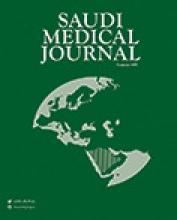REVIEW ARTICLE
Evidence based synthesis for prevention of noninvasive ventilation related facial pressure ulcers
Alqahtani & AlAhmari discuss the different characteristics of noninvasive ventilation (NIV) interfaces and to provide evidence based recommendations to facilitate the selection and application of such interfaces to reduce NIV interfaces related pressure ulcers. Authors conclude that the development of a prevention protocol for NIV interfaces related to pressure ulcers is vital for improved NIV compliance and success. The current evidence suggests that although the oronasal mask is often the interface first used for ARF treatment, its use is a strong risk factor for the development of facial skin breakdown. Therefore, for patients who are likely to need continuous NIV over a more prolonged period of time, or those who developed any sign of facial skin injury after a regular skin evaluation, the initial use of the TFM with regular interface rotation and alternation is strongly suggested to reduce the development of such ulcers.
Audit trial of the screening and selecting the eligible papers
see page 443
ORIGINAL ARTICLES
The effect of varying cone beam computed tomography image resolution and field-of-view centralization on effective radiation dose
Jadu et al investigate changes in the effective radiation dose (E) in relation to variations in voxel (VOX) size settings and the field-of-view (FOV) centralization. An inverse and indirect relation was found between E and the VOX size setting with smaller VOX yielding higher E. CBCT scans centered on the mandible resulted in higher E than scans centered on the maxilla. They conclude that effective radiation doses are significantly affected by changes in VOX size settings and FOV centralization options. This reflects on the potential radiation risk to patients and highlights the importance of choosing exposure parameters carefully.
The (RANDO)® male phantom in place in the i-CAT classic® cone beam computed tomography (CBCT) unit
see page 470
Serotonin and serotonin transporter levels in autistic children
Abdulamir et al assess the possible correlation between serotonin and serotonin transporter (SERT) with the autism severity and investigate the association between these parameters in autistic children to assess their possible role for diagnosis of autism severity. Levels of serotonin and SERT were significantly increased in autistic children than that of gender and age-matched controls. Serotonin levels were 80.63± 21.83 ng/ml in mild, 100.39±23.07 ng/ml moderate, and 188.7±31.72 ng/ml severe autistic patients. They conclude that high serotonin and SERT levels may indicate that these biomarkers have a role in the autism pathogenesis and support the possibility of using serotonin and SERT to diagnose autism severity.
Receiver operating characteristic curve of the serotonin and serotonin transporter (SERT) levels in autistic children
see page 487
CASE REPORT
Atypical posterior scleritis mimicking choroidal melanoma
Alsharif & Al-Dahmash report a case of atypical posterior scleritis mimicking amelanotic choroidal melanoma. A 30-year-old healthy Filipino man, with a history of painless subacute loss of vision in his left eye over 5 months, was referred to our institute for further workup and management. On examination, visual acuity of the left eye was 20/200. Anterior segment examination yielded unremarkable results, with injected conjunctiva and quiet episcleral blood vessels, while fundus examination revealed non-pigmented nasal choroidal mass, with significant subretinal fluid resembling amelanotic choroidal melanoma. Right eye examination yielded unremarkable results. The patient was diagnosed with atypical posterior scleritis, and treated with oral steroids for 2 weeks, with no improvement.
A) Color photograph of the fundus of the left eye, showing a large choroidal non-pigmented lesion nasal to the optic disc. B) Brightness scan of the left eye, showing a choroidal lesion with dense echogenicity, thickening of the adjacent sclera, and exudative retinal detachment
see page 514
- Copyright: © Saudi Medical Journal
This is an open-access article distributed under the terms of the Creative Commons Attribution-Noncommercial-Share Alike 3.0 Unported, which permits unrestricted use, distribution, and reproduction in any medium, provided the original work is properly cited.










